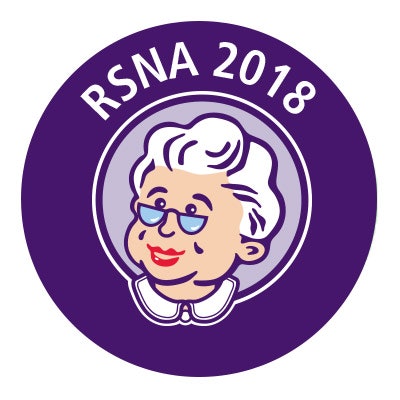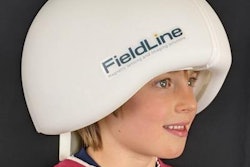
CHICAGO - Could magnetoencephalography (MEG) become radiology's new weapon in its arsenal to evaluate the effects of concussions? MEG's measurement of delta-wave changes could become a key biomarker after a head injury, according to a study presented on Monday at RSNA 2018.
Researchers from the University of Texas (UT) Southwestern Medical Center in Dallas found increased delta waves in concussed high school football players, compared with athletic counterparts who participate in noncontact sports.
"The clinical relevance is that traditional imaging is typically unremarkable in concussions," said lead author Elizabeth Davenport, PhD, a postdoctoral researcher at UT Southwestern's O'Donnell Brain Institute. "This study shows that MEG might be a new and more useful diagnostic tool for concussion, especially for radiologists to read."
MEG measurements
MEG is a noninvasive form of functional brain imaging that detects small magnetic fields created by neurons. That activity is measured in delta waves, which range in frequency from 1 to 5 MHz, with a 1 MHz frequency repeating once per second and 5 MHz frequency repeating fives time per second.
 Elizabeth Davenport, PhD, from UT Southwestern.
Elizabeth Davenport, PhD, from UT Southwestern."Injured brain tissue has been known to produce these low-frequency signals in the delta band of military and civilian patients with traumatic brain injury," Davenport told RSNA attendees. "It also is seen in normally developing youth, but it decreases as they age; much like when you lose your baby teeth, you lose delta waves as you age."
If the current study sounds familiar, it may be because Davenport and colleagues introduced the use of MEG for concussion evaluation at RSNA 2017. Last year's study analyzed 20 high school football players; five experienced at least one concussion during the season, while the other 15 had no such injury.
When the five concussed players were evaluated after the season, MEG results showed significantly lower connectivity between the brain's default mode network regions. Players with no history of concussion had, on average, an increase in default mode network connectivity.
In the current study, the researchers examined those same five players (mean age, 16.1 years) who were diagnosed with a concussion during the season and followed the appropriate protocols to return to action. They also studied seven age- and gender-matched noncontact athletes, such as swimmers, who served as controls and had no history of neurological disease. All of the subjects underwent preseason and postseason MRI and MEG scans. Imaging was performed two weeks before the start of the season and within two weeks of the season's end. The players also underwent MRI and MEG during the season within 36 hours of a concussion.
Eight minutes of eyes-open, resting-state MEG data were acquired for each player and control subject using a 275-channel, whole-head system. The researchers then analyzed delta waves associated with the eight brain regions of the default mode network.
Image processing
The key to making the MRI-MEG collaboration work is an advanced signal process, which removes artifacts for image correction and registers MR images with MEG results to create a standardized template for all subjects, according to the researchers. The combination of MRI and MEG then allows them to "source localize" the data in the brain to compare delta waves from various time points.
"What is very interesting about this [process] is that these increases in delta waves are visually apparent, meaning that concussions could be a clinically useful application for MEG because a radiologist could read these scans," Davenport told AuntMinnie.com.
The researchers saw statistically significant differences (p = 0.014) in delta waves between the two groups of athletes. Delta waves among the players after a concussion increased from approximately 2.1 MHz to 6.8 MHz, while delta waves among the control group actually decreased from baseline results to postseasons exams. Interestingly, the delta waves among the concussed players decreased by the end of the season to a point where there was no statistically significant difference between the two groups on postseason exams.
In discussing the ability to visually see delta-wave changes and their locations on processed MRI-MEG images, Davenport provided an image of one concussed football player whose delta-wave increases were evident in the occipital and left temporal lobes. She also showed changes in the right occipital lobe of another player who was hit on the back of the head.
MEG's viability
While these results are certainly promising, there are many steps to come before MEG could be used clinically for concussion.
"We would need multiple studies from various institutions in order to create a strong database to show the efficacy, reliability, and repeatability of MEG scans during concussion," Davenport said. "This would also be the first step in getting clinical approval."
She and her colleagues currently have grant applications in review to collect more data using their technique. In addition, UT Southwestern is home to the ConTex concussion registry, through which researchers can document and track concussion incidence in Texas. "[That] makes us ideally suited to also follow these concussed individuals using advanced imaging," she added.
One hurdle, however, is that MEG is not readily available at most institutions. Davenport estimated that there are approximately 30 facilities with MEG in the U.S. The slow adoption rate is due, in part, to the fact that MEG is a newer technology and there are few clinically approved applications, she said.


.fFmgij6Hin.png?auto=compress%2Cformat&fit=crop&h=100&q=70&w=100)





.fFmgij6Hin.png?auto=compress%2Cformat&fit=crop&h=167&q=70&w=250)











